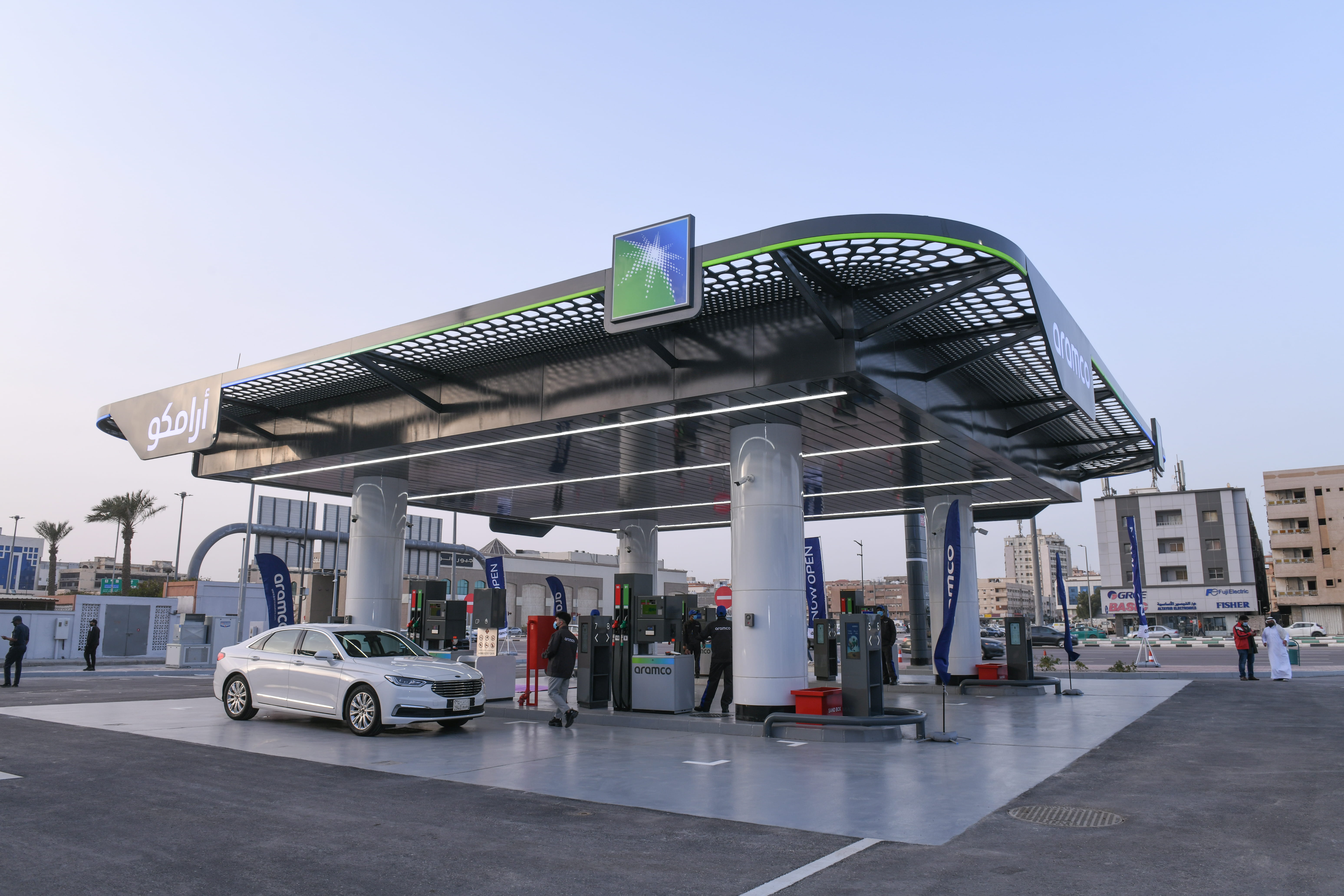
Retail fuels
Saudi Arabia is a country on the go. Every day we supply high-quality fuels to the local marketplace for auto, home, and business.
In 2019 we entered into a 50:50 joint venture with TotalEnergies to operate service stations in the Kingdom by acquiring a network of 270 service stations in the Kingdom under the “Sahel” brand name.
From gasoline to kerosene to sales gas, our customers enjoy a range of retail fuel products that help keep the Kingdom’s economy thriving and its people living more mobile and productive lives.
About our retail fuels
Aramco provides quality fuels to meet the needs of today’s engines.
Available in both PG-91 and PG-95, our gasoline fuels meet the needs of all gasoline-powered cars sold in the Kingdom. We also supply high-quality diesel fuel for trucks and other specialty vehicles.
To ensure consistent quality all the way to the customers’ tank, following testing and certification, our fuels are color coded for easy visual identification at the pump.
All of our gasoline fuels are unleaded.
Prices for the month of April 2025 (﷼ /liter)
2.18
Gasoline 91
2.33
Gasoline 95
1.66
Diesel
1.33
Kerosene
1.04
LPG
How to choose the right fuel for your vehicle
PG91 is suitable for most modern cars. PG95 is a premium grade gasoline appropriate for higher-performance cars. If you’re not sure of your vehicle’s correct octane rating, check the owner’s manual or ask the manufacturer or dealer where you purchased the vehicle. Sometimes, the recommended fuel can be found on a sticker inside the filling cap.
Learn about octane numbers
PG95 is a 95 Research Octane Number (RON) octane grade gasoline, and PG91 is a 91 RON octane grade gasoline.
Mostly, fuels with a higher octane rating are used in high-compression engines, which have higher performance requirements. The higher the octane number, the more compression the fuel can withstand before detonating.
Specifically, the octane number relates to the engine’s compression ratio, which is an indication of the anti-knock ratio of the fuel that determines the amount of compression the fuel can handle before it ignites. The Anti-Knock Index (AKI) is the average of a fuel’s RON and Motor Octane Number (MON): (R+M)/2.
RON and MON are determined by using a special engine with a variable compression ratio, and comparing the knock qualities of a given fuel to that of reference fuels.
Energy products
From transportation fuels to advanced materials, our diverse and expanding range of products create value not only for our customers, but also our company, partners, and shareholders.